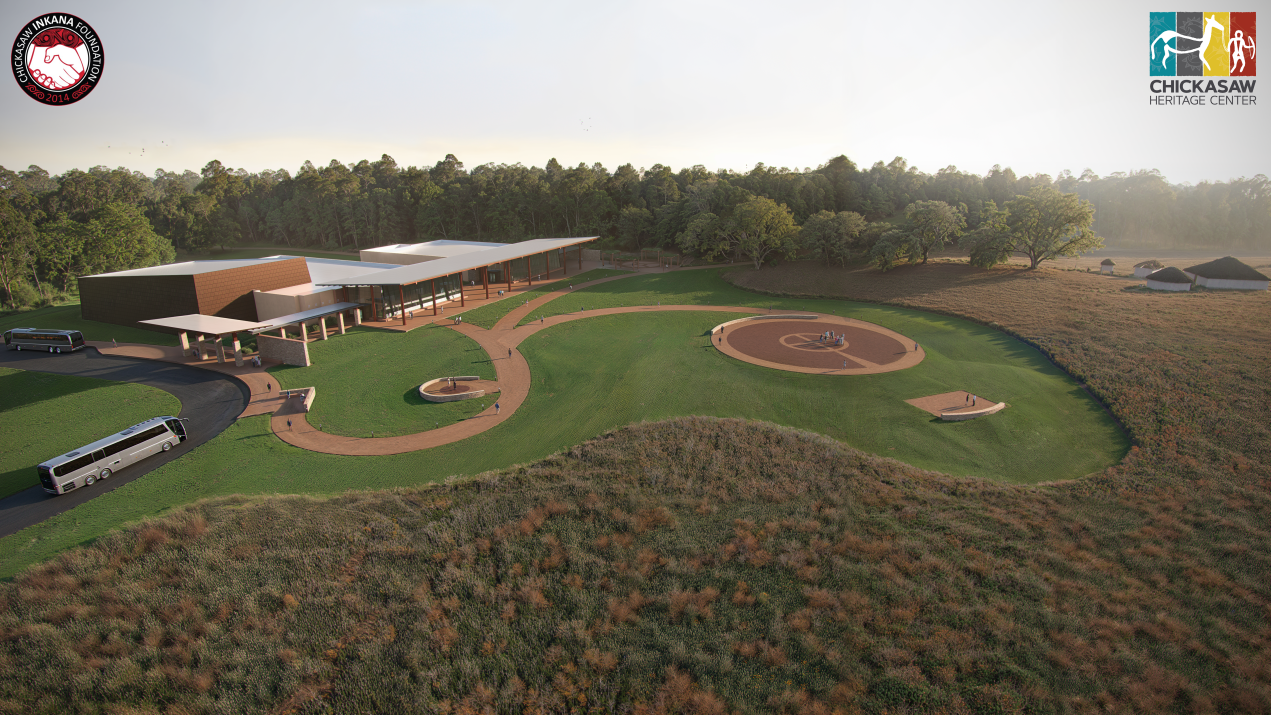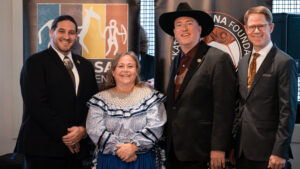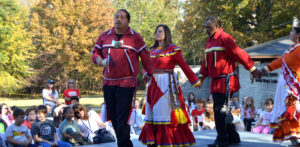No products in the cart.

Chickasaw Nation’s story covers centuries across north Mississippi, beyond
“People think of First American cultures as past, because they were here for thousands of years, and so much of it is now gone, but the story of the Chickasaw is one that is still alive and very strong today,” said Brady Davis, CEO of the Chickasaw Inkana Foundation. “The removal of the Chickasaws was terrible, but it wasn’t the end of their story. It’s one point in a people’s history that continues to thrive and grow.”
As the Daily Journal reported Thursday, a formal groundbreaking was held this week on a $60 million project that’s well on its way to success, locating an extensive Chickasaw heritage center along the Natchez Trace in a 163-acre site that will connect to the present-day Chickasaw Village. Work to found, fund and develop this project has spanned decades, and is being masterfully coordinated by Davis and his staff, who are based in Tupelo.
A Nashville native, Davis fell in love with anthropology at the University of Middle Tennessee. The people doing the work in both the classroom and the field there ran a small program and treated serious undergrads as they would have master’s students. The personalities of the people and the intricacies of the field work, along with the joys of discovery, hooked him for life. He made connections with the Chickasaw Nation through colleagues there and during his graduate studies at Southern Mississippi, and soon went to work for them helping preserve a site located east of Tupelo. When fates aligned to locate a heritage center, Davis was a natural fit to lead the job.
In 2014, the Chickasaw Inkana Foundation was launched with the intention of creating a heritage center to preserve and interpret Chickasaw culture, but with the additional ambition of being a major hub of ongoing local and regional activity as well. By attracting events otherwise completely unrelated to Chickasaw culture, the heritage center will be able to share the Chickasaw story in ways both passive and active.
“The ultimate goals of the heritage center are to share their rich history and their present culture through their lens as they experience it,” Davis said. “They have a tremendous history, but a very strong modern presence too.”
Why in Tupelo?
From the dawn of time until the early 1800s, the Chickasaw homeland took in what would become north Mississippi, northwestern Alabama, western Tennessee and far southwestern Kentucky, but the very heart of the homeland spanned the ridges and prairies that now make up Tupelo and much of southern Lee County.
“Chickasaw settlements were very spread out along the ridges,” Davis said. “There were summer houses, winter houses, corn cribs and centralized forts for protection. There was a tremendous sense of identity for these areas here until the early 1800s. This is the place a Chickasaw homeland heritage center needs to be.”
Beginning in 1836, the Chickasaw were forcibly removed by treaty with the U.S. government from their homeland to land in the Midwest, primarily Oklahoma Territory.
Per their website chickasaw.net, “The Chickasaw people moved to Indian Territory during the Great Removal, on what was called the Trail of Tears. Other tribes forced to relocate were the Cherokee, Choctaw, Creek and Seminole, called the Five Civilized Tribes because of their highly-developed ruling systems. The Chickasaws were one of the last to move. In 1837, the Treaty of Doaksville called for the resettlement of the Chickasaws among the Choctaw tribe in Indian Territory. In 1856, the Chickasaws, in order to restore direct authority over their governmental affairs, separated from the Choctaws and formed their own government.”
That story, one of not only enduring survival, but of persistence, determination and a robustly-maintained self identity, is part of what Chickasaw and local leaders at every level want to help tell.
“Back when Jack Reed, Jr. was mayor, he jumped on this early and was extremely supportive,” Davis said. “On his own dime, he traveled to Oklahoma to visit the Chickasaw Cultural Center to get an idea of the magnitude of what the project could be. Neal McCoy with the Convention and Visitors Bureau was extremely supportive. The City of Tupelo in general has been extremely supportive through all mayoral administrations since as well. Don Lewis, Chief Operating Officer for Tupelo, has been in place throughout and the coherence and consistency he’s been able to provide has been indispensable.”
State representatives and senators as well as Mississippi’s congressional delegation have been deeply involved. In all, Davis and the city’s leaders have put on a master class of relationship building to help bring this together. They have the Chickasaw Nation, the National Park Service, state, federal and local leaders, plus tremendous representation from leading citizens all singing from the same sheet of music, and the harmony seems destined to last.
What will it be?
“People think of the First Americans as past, but this center will connect the past to the contemporary culture of today,” Davis said. “We want to make sure visitors can learn about pre-removal history, and learn about what their culture is today. The story has been shared, but not on the level that we’re trying to do it here in the heart of the Chickasaw homeland.
“While these attempts have proven very valuable and sincere, we now have the opportunity to share the rich history and culture of the Chickasaw people through their distinct lens with the establishment of the Chickasaw Heritage Center. This project has been a cherished dream for decades.”
Construction will occur in two phases. The first will include construction of the lobby, exhibit hall, gift shop, a multipurpose room, collections management and administrative offices. Phase 2 will include a theater and cafe.
The center is projected to attract more than 100,000 visitors annually, directly create at least 25 jobs and generate between $5 million and $6 million per year in revenue.
The Daily Journal’s Caleb McCluskey contributed to this story.


